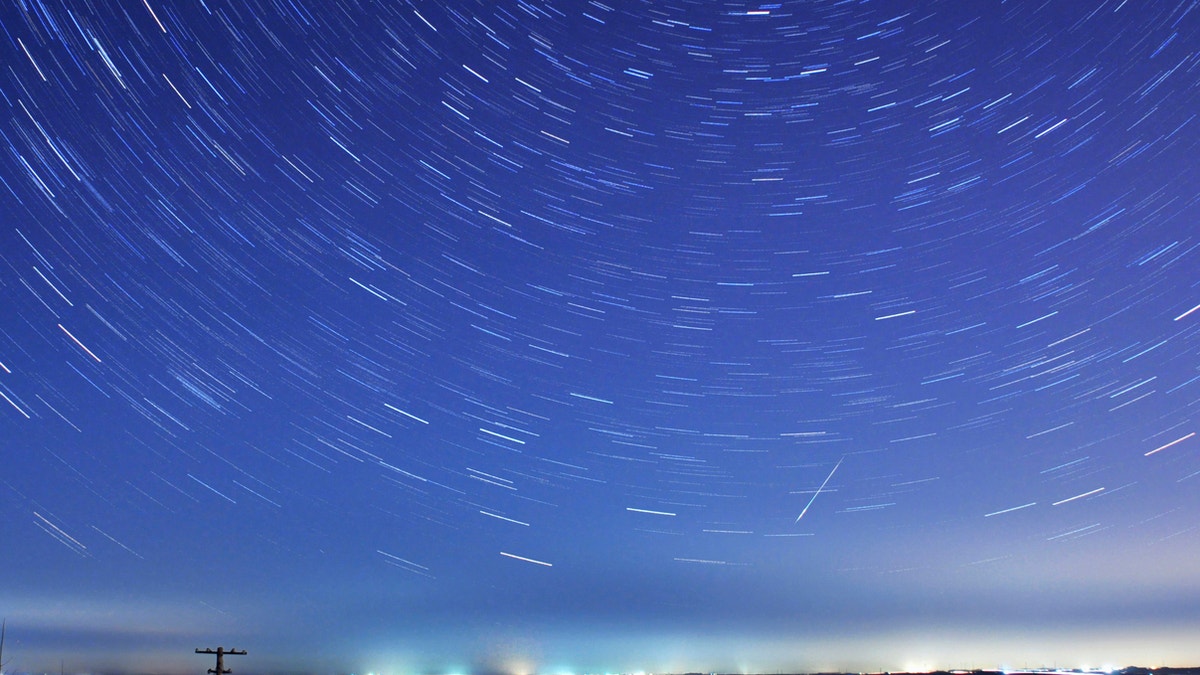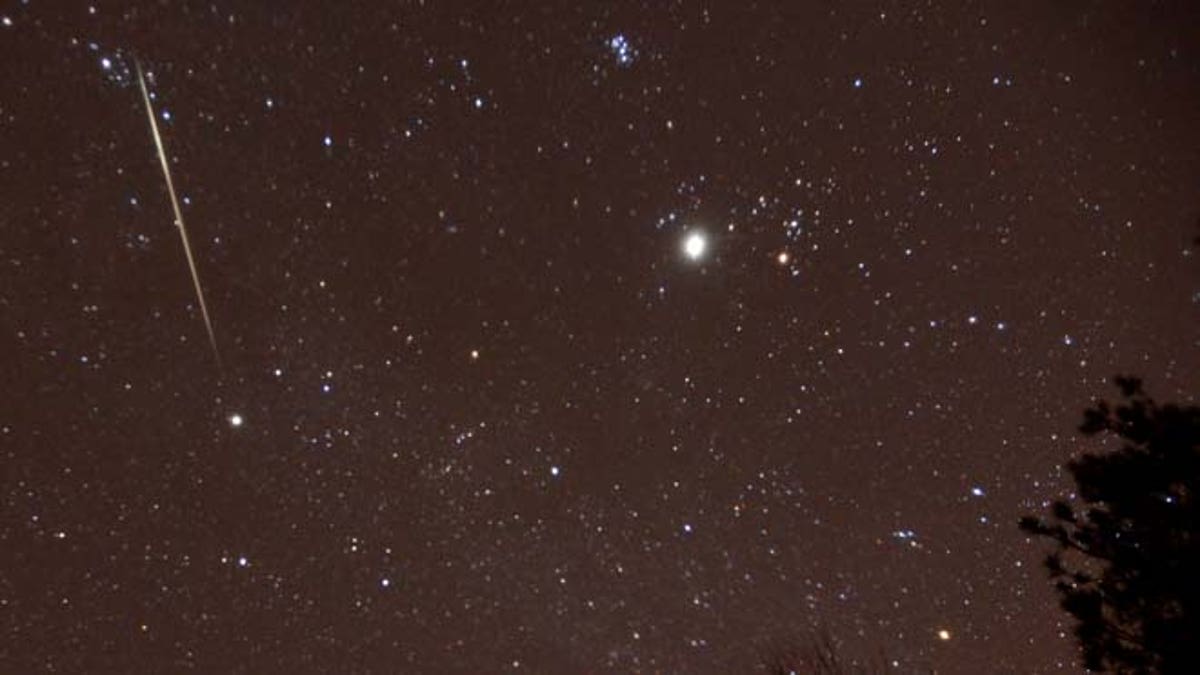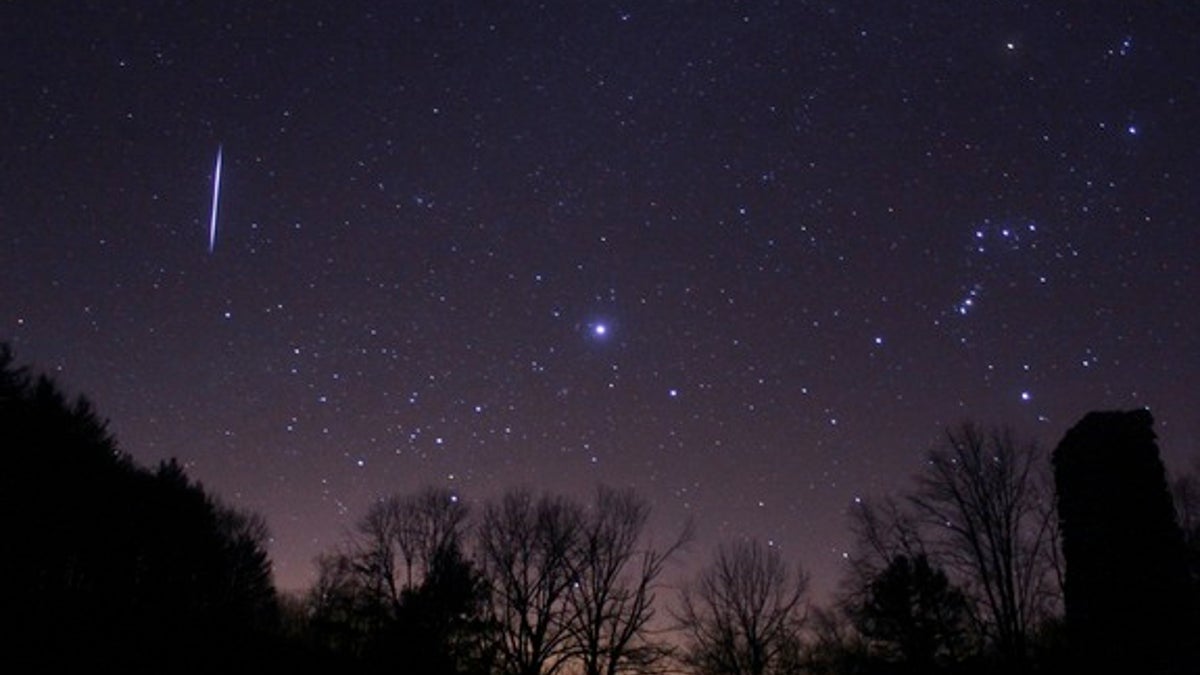
The Eta Aquarid meteor shower is expected to reach its peak on May 6. (REUTERS/Stringer)
Expect to see more showers in May — meteor showers, that is.
The night's sky is going to sparkle with meteors this weekend as the annual Eta Aquarid meteor shower reaches its peak with 10 to 30 meteors dropping per hour.
The shower, which is expected to last through May 28, will be blocked by the moon for some in the Northern Hemisphere. But your best bet to catch the stunning view, according to NASA, is just before dawn on May 6.
Have your binoculars ready: this particular meteor shower is known for its speed, "traveling at about 148,000 mph (66 km/s) into Earth's atmosphere," NASA reports.
Here's what you need to know about the spring celestial event.
How are meteors formed?
A meteor forms when a meteoroid, a type of space rock that breaks off from an asteroid -- a rocky body orbiting the sun -- enters Earth's atmosphere. As soon as the space debris crosses over, it breaks down into what scientists call a "meteor," which then vaporizes and -- as a result of friction -- appears as a bright streak of light in the sky.
"Because of their appearance, these streaks of light some people call meteors 'shooting stars,'" NASA explains in a blog post online. "But scientists know that meteors are not stars at all — they are just bits of rock!"
What is an Eta Aquarid meteor, specifically?

AP/AL.com (Eta Aquarid meteors break off of the comet Halley.)
Eta Aquarid meteors are small chunks of rock that break off of Comet Halley, which "takes about 76 years to orbit the sun once," Space.com reports.
Every time Halley hits the inner solar system, debris from the comet enters space and become meteors once they enter Earth's atmosphere.
"All meteors move off the track of the comet orbit," NASA meteor expert Bill Cooke told Space.com. "When they come off the comet, they are at a slightly different speed, and that changes the orbit a bit … Other things besides gravity mess with it [such as radiation pressure and even interplanetary gas]."
What's a meteor "outburst"?

Catch the famous spring meteor shower at its peak on May 6. (Scott Tully)
Occasionally a meteor shower develops into a storm, dropping up to 1,000 meteors per hour. This occurence is rare, though, and often difficult to predict.
"People say there is some periodicity there, but the data doesn't support that," Cooke told Space.com, adding that these so-called "outbursts" are usually at least 30 years apart.
When can I see the Eta Aquarid meteor shower?
You can catch the starry spectacle through May 28. However, you'll have the best chance to spot the meteors before dawn on May 6 when the shower reaches its peak.
How can I watch it?
Unlike solar eclipses, which requires special equipment to view the astrological event, you don't need anything to spot this celestial event.
"Get to a dark spot, get comfortable, bring extra blankets to stay warm, and let your eyes adjust to the dark sky," NASA suggests. "A cozy lounge chair makes for a great seat, as does simply lying on your back on a blanket, eyes scanning the whole sky."
It takes about 20 minutes for your eyes to adjust to the darkness, so you should head outside about an hour before the meteors are expected to shoot across the sky.
"Their radiant—the point in the sky from which the Eta Aquarids appear to come from—is the constellation Aquarius, the water bearer. One of the brightest stars within Aquarius is called Eta Aquarii, and these meteors appear from this area of the constellation," NASA explains.








































